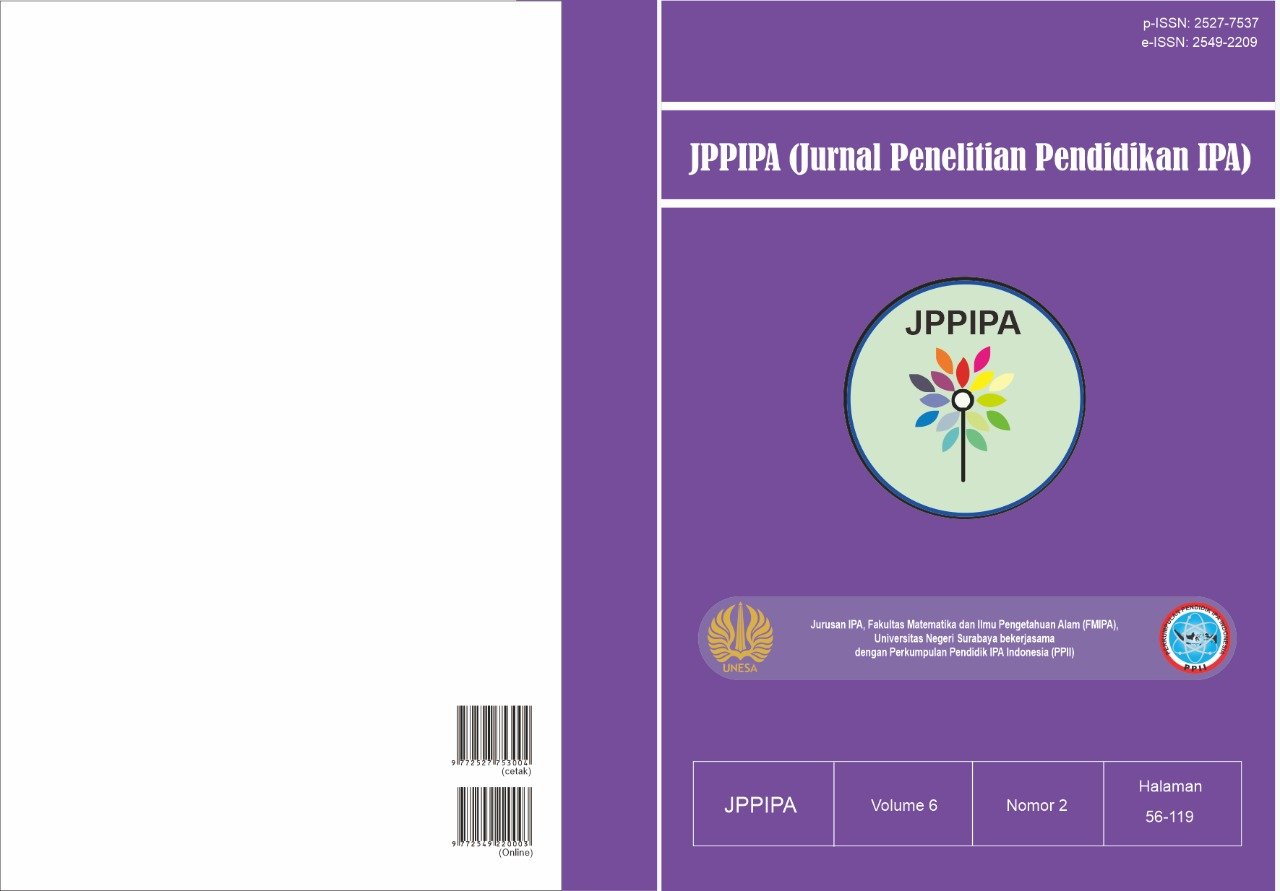THE DESIGN OF ELECTROLYTE AND NON ELECTROLYTE SOLUTION TEACHING MATERIALS WITH MULTI REPRESENTATION
DOI:
https://doi.org/10.26740/jppipa.v6n2.p75-80Keywords:
teaching materials, multi-representation, electrolyte and non-electrolyteAbstract
The limited resources for learning chemistry and the lack of application of multiple representations in schools are a problem for students in understanding chemistry at the molecular level. This study aims to obtain a multi-representation-oriented teaching material design that is feasible to use. Development of teaching materials using the 4D Thiagarajan et al, this is because this model is specifically for book development. The design of electrolyte solution and multi-representation-oriented teaching materials is assessed by five experts consisting of three FKIP lecturers and two chemistry teachers. The results of judgment on aspects of material feasibility, presentation of material, and language each get a percentage of 83%; 83.%; 83.9% the three into the very decent category. While the results of the multi-representation aspect of judgment consist of five criteria, namely 1) the type of representation, the type of representation (C1), the interpretation of features (C2), the relationship with the text (C3), the description of the image (C4), the degree of connectedness (C5) has been met according to the criteria specified used. In the readability test, the teaching materials developed are categorized as easy to understand for students and independent categories, then received a positive response from students.
References
Achmaliya, Nurdan. (2016). Development of Chemical Representation-Based Modules on Collision Theory Materials. Journal of Education and Learning, 5, (1), 114-127.
Akbar, Sa'dun. (2013). Learning Tool Instruments. Bandung: Rosdakarya Teenagers.
Dewi, Rosmaya et al. (2016). Analysis of Students' Conceptual Mastery of Electrolyte and Non-Electrolyte Solutions Using Deductive Hypothesis Learning Cycle. Journal of Chemistry and Education, 1, (2), 99- 109.
Farida, Ida. (2013). Concept Analysis in the Development of Chemistry Learning. On line. Available: https://faridach.wordpress.com/2010/11/ 04/peranananalisis-concept-dalampengemban-pembelajaran/ [Accessed 9 March 2021].
Gkitzia, V., Salta, and C. Tzougraki. (2011). Development and Application of Appropriate Criteria for Evaluation of Chemical Representations in School Textbooks. Chemical Education Research and Practice, 12, 5-14.
Hudiyono. (2012). Building Student Character. Surabaya: Erlangga.
Johnstone, A.H. (1991). Why is Science Hard to Learn? Things are Rare What They Seem. Journal of Computer Assisted Learning, 7, 75-83.
Kamila, Atiya., or Fadiawati., Lisa Tania. (2018). The Effectiveness of the Chemical Representation-Based Buffer Solution Student Book in Increasing Concept understanding. Journal of Chemistry Education and Learning, 7(2): 211-222.
Kean, E., and Middlecamp, C. (1985). Survival Manual for General Chemistry. (A.H. Pudjaatmaka, Trans). Jakarta: Gramedia.
Khoirot, Tafakur. (2015). Development and Feasibility Test of Microsoft Access 2010 Learning Module as Teaching Material for Computer Skills and Information Management for Class XI SMK Negeri Bansari. [Unpublished Thesis]. Yogyakarta State University.
Nurdin, Erdawati., Risnawati., and Mirse Ayurila. (2018). Development of Student Worksheets Based on Group Investigations to Facilitate Mathematical Reasoning Ability of Junior High School Students. Journal for Research in Mathematics Learning, 1,(3), 219-226.
Prastowo, Andi. (2015). Creative Guide to Creating Innovative Teaching Materials: Creating Interesting and Fun Methods. Yogyakarta: Diva Press.
Rankin, Earl F & Culhane, Joseph W. (1969). Comparable Multiple Choice and Cloze Comprehension Test Scores. J Reading,13, 3.
Sugiyono. (2016). Qualitative Quantitative Research Methods and R&D. Bandung: Alphabeta.
Wicaksono, Bayu Aji. (2017). Development of Big Book Oriented Teaching Materials. [Unpublished Thesis]. Muhammadiyah University Purwokerto.
Widyoko, Eko Putro. (2015). Evaluation of Learning Programs". Online. Available: http://www.umpwr.ac.id/download/publikasiilmiah/Evaluasi%20Program%20 Learning.pdf. [July 14 2015].
William R Robinson. (2015). Chemical. OpenStax College. Houston: Rice University.
Downloads
Published
How to Cite
Issue
Section
 Abstract views: 1654
,
Abstract views: 1654
, PDF Downloads: 894
PDF Downloads: 894












